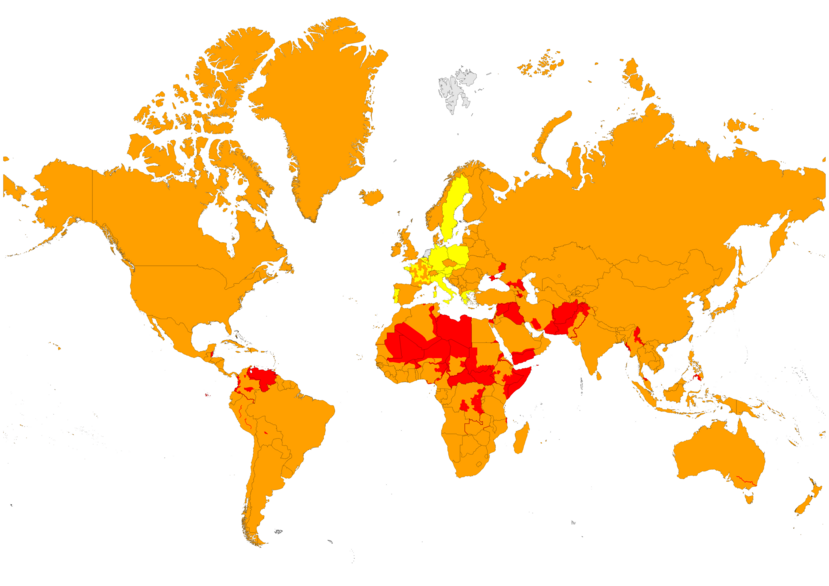The rising corona numbers in the Netherlands has lead to an array of travel rules that can be hard to keep up with. Although now is not really the time for that Euro-trip you were planning, for those who need to visit family or take a corona-safe break somewhere, the question is where are the Dutch now welcome?
The first step is to check out the Dutch government’s travel advice, so you can see which countries will require you to quarantine when you return.
Yellow means caution, as rules are different to those in the Netherlands so take note of what these rules may be.
Orange means only necessary travel as there are serious risks in this country.
Red means do not travel, as the serious risks in these countries can create life-threatening situations for travelers.
Take note though that the travel advice is not binding, and the way in which you protect your health and the health of others is your responsibility.
European countries keeping the Dutch out
Denmark has tightened its borders against the Dutch, and will now only let you in for a valid reason, such as visiting family. Visiting Hungary is currently not an option at all, as the country is only allowing residents through the borders, reports NOS.
Entry with restrictions
Other countries are allowing the Dutch in so long as they follow certain restrictions. To enter Germany, for example, you must show a recent negative corona test upon arrival. only residents from Zeeland will be allowed to enter without a corona test.
Meanwhile, Belgium has coded parts of the Netherlands (Noord-Holland, Zuid-Holland, Utrecht, Groningen, Gelderland, Flevoland or Noord-Brabant) as red zones, since the numbers in these areas are so high. According to their system, this means that only necessary travel is recommended from these areas. If you arrive in Belgium from one of these areas, you will be tested upon arrival and will be required to quarantine for seven days.
“You have to keep a close eye on the website of Foreign Affairs,” Mirjam Dresmé of the travel industry organization ANVR tells the NOS. “Even if a country is yellow according to the Dutch authorities, you may not be welcome. Especially if you come from one of the regions with a lot of infections.”
List of European countries and their restrictions for travelers from the Netherlands:
- Belgium: Travelers must take a corona test upon entry and those from red zones must quarantine for seven days.
- Denmark: Entry only with valid reason, including family visit.
- Germany: Mandatory 2 weeks of quarantine (residents of Zeeland excluded) unless you have a negative corona test no older than 48 hours.
- Hungary: Only residents allowed in.
- Italy: Mandatory corona test at the airport, unless you have a negative test result from within 72 hours ago.
- Norway: Mandatory quarantine of 10 days.
- Poland: No restrictions but you may be checked for symptoms at the border.
- Spain: Entry only with a health certificate, and no entry to Madrid unless you have a valid reason.
- Switzerland: Must quarantine for 10 days from entry.
- United Kingdom: Mandatory quarantine of 14 days. Breaking this rule could result in a fine of about €1,100.
- Countries without entry restrictions: Austria, Croatia, France, Greece, Portugal, Sweden.
Last minute sun
For those looking to bump up their vitamin D intake, warmer destinations are becoming increasingly limited. “Where we normally offer 120 destinations, these are now only the Portuguese Algarve and Madeira, the Greek Thessaloniki and Curaçao,” a travel agent from TUI said.
Booking last minute has also become the new norm. The travel agency now sees this happening only about two weeks in advance.
Will any of these travel restrictions affect you? Let us know in the comments below.
Feature Image: CardMapr/Unsplash




